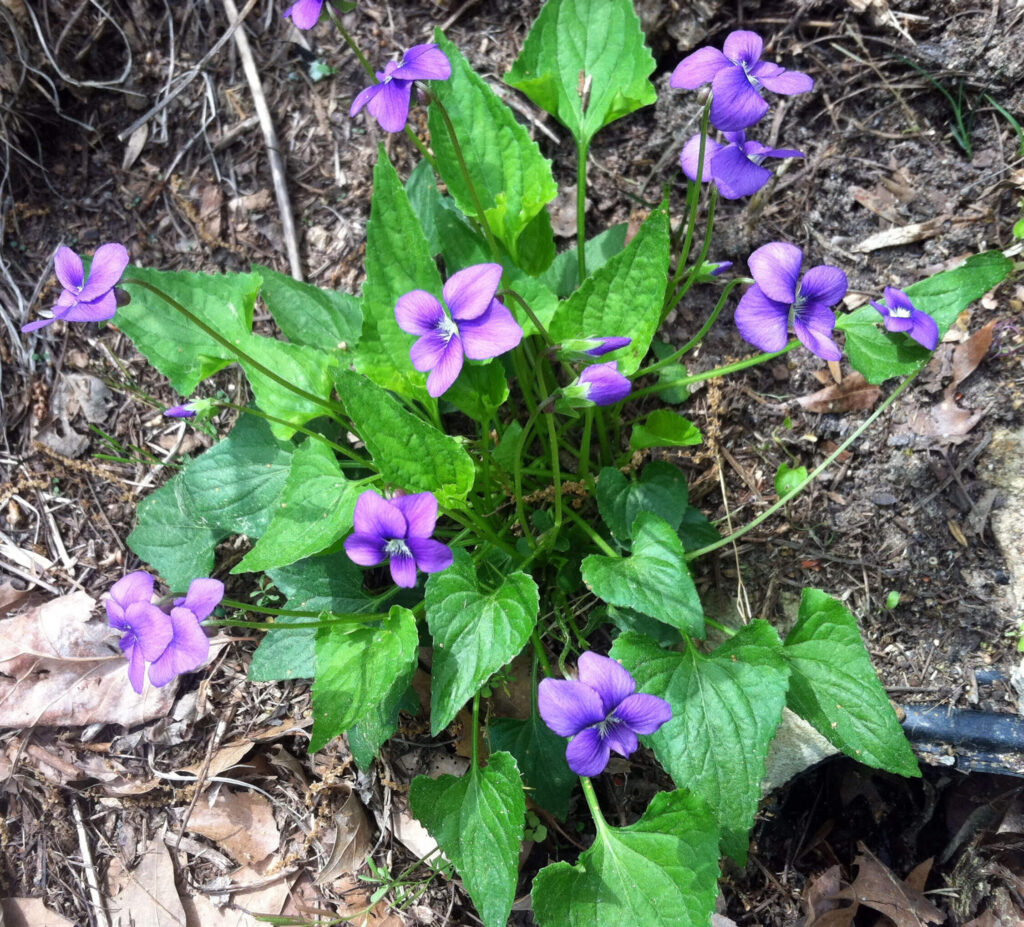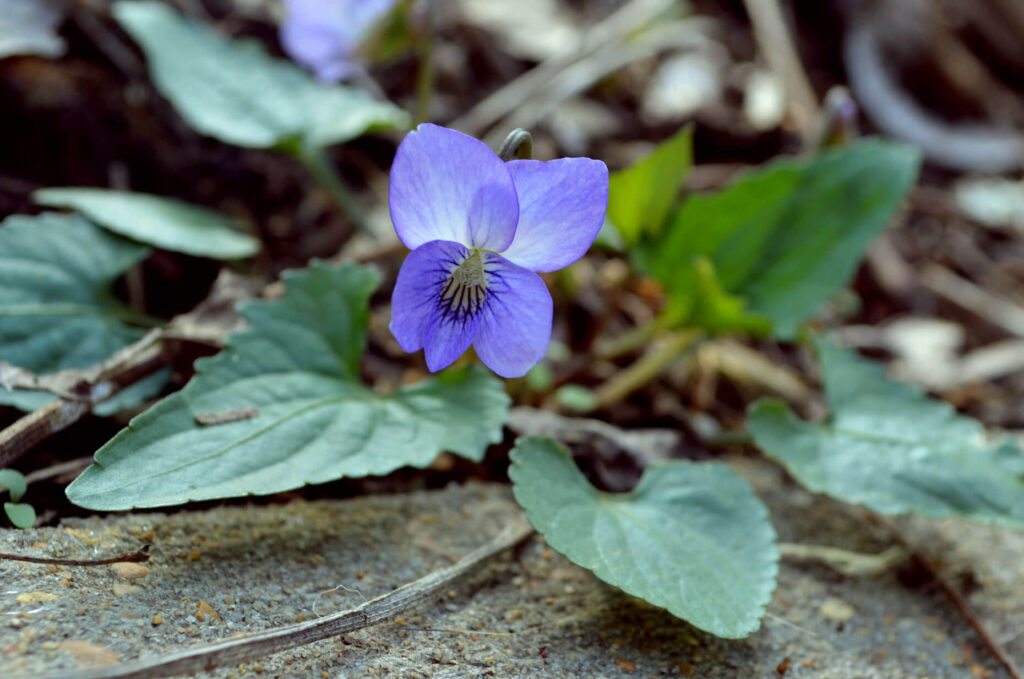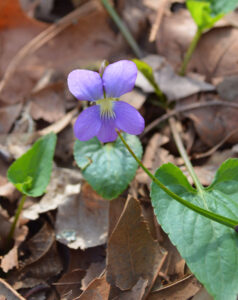The little purple-blue flowers of common blue violet are blooming all over my grass under the trees, where it stays moist for long periods of time. I always try to mow around them as much as I can so that I can enjoy the wildflowers. They bloom in early spring into early summer, from April to June and sometimes July.

Common Blue Violet Plant Description
This small plant grows about 4 inches high and can be as wide as 5 or 6 inches. It is low to the ground, with the flower raised on a leafless stalk extending above the leaves. It is perennial and easily spreads through seeds. Common blue violet is native to the eastern United States.
The leaves of the plant are heart-shaped and have crenate or serrated edges. The roots are rhizomes and penetrate the soil about 4-5 inches.
The flowers have five petals with a white center that often has purple or violet veins. The flowers are small, only about 3/4 of an inch in height. Flowers are usually deep purple or violet, but they can also be greyish, periwinkle, or white.
Light and Water Requirements
Like the violets in my yard, common blue violets are often found in lawns. They are also found along stream edges, meadows, roadsides, and forests.
They thrive in moist soil in part-shade to light shade, but they can also grow in full sun as long as enough moisture is available.
These violets spread rapidly and can become weedy, especially in optimum growing conditions. They make a good ground cover and may help reduce erosion in places where the soil is too moist for grass or other typical groundcovers.
Removal of this Wildflower
The best method to control this wildflower is manual removal. However, you must be sure to get the entire rhizome out of the soil. The plant often breaks off, leaving the roots in the soil. If this happens, the plant will return.
Pulling them up is a lot easier after rain. You can dig them up with a spade to ensure you get all the roots. In lawns maintaining a healthy lawn will help prevent the spread of the violet.
Wildlife Uses of Common Blue Violet
You won’t see pollinators frequently around violets, but they do sometimes attract bees, skippers, and flies. In parts of the U.S., the caterpillars of fritillary butterflies feed on the leaves. It is the only host plant for these butterflies.
The seeds are fed upon by Bobwhite Quail, Wild Turkey and Mourning Doves. Turkey sometimes eat the leaves and roots as well.
Deer, rabbits, and mice feed upon this plant as well, though it is not a preferred food. It is considered deer-resistant.

Interesting Facts
Apparently the common blue violet has been used as a food source for candies and jams and as a medicine. You can read more about its history and uses here: http://bioweb.uwlax.edu/bio203/2010/yang_paj/facts.htm
Viola sororia is the state flower for Illinois, New Jersey, and Wisconsin.

